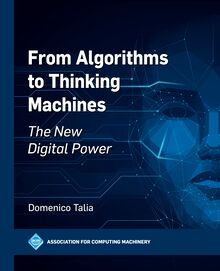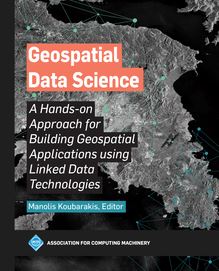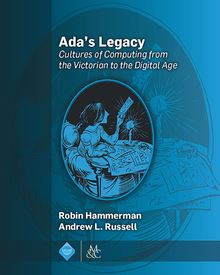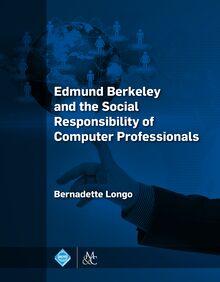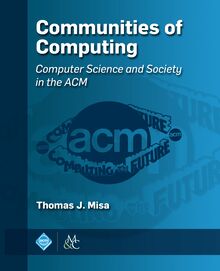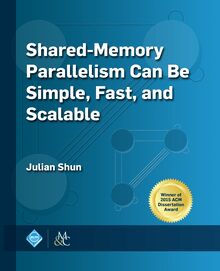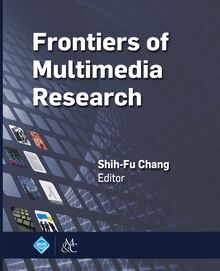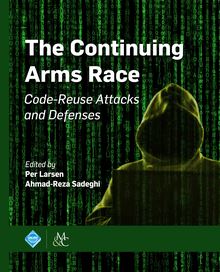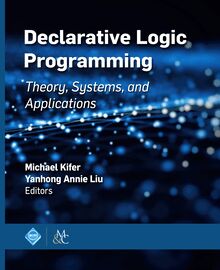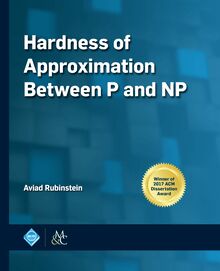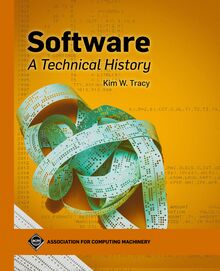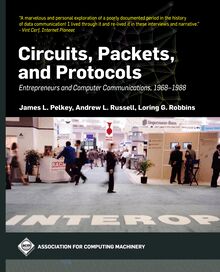-
 Univers
Univers
-
 Ebooks
Ebooks
-
 Livres audio
Livres audio
-
 Presse
Presse
-
 Podcasts
Podcasts
-
 BD
BD
-
 Documents
Documents
-
- Cours
- Révisions
- Ressources pédagogiques
- Sciences de l’éducation
- Manuels scolaires
- Langues
- Travaux de classe
- Annales de BEP
- Etudes supérieures
- Maternelle et primaire
- Fiches de lecture
- Orientation scolaire
- Méthodologie
- Corrigés de devoir
- Annales d’examens et concours
- Annales du bac
- Annales du brevet
- Rapports de stage
La lecture à portée de main
Vous pourrez modifier la taille du texte de cet ouvrage
Découvre YouScribe en t'inscrivant gratuitement
Je m'inscrisText Data Management and Analysis , livre ebook
Découvre YouScribe en t'inscrivant gratuitement
Je m'inscrisEn savoir plus
Vous pourrez modifier la taille du texte de cet ouvrage
En savoir plus

Description
Recent years have seen a dramatic growth of natural language text data, including web pages, news articles, scientific literature, emails, enterprise documents, and social media such as blog articles, forum posts, product reviews, and tweets. This has led to an increasing demand for powerful software tools to help people analyze and manage vast amounts of text data effectively and efficiently. Unlike data generated by a computer system or sensors, text data are usually generated directly by humans, and are accompanied by semantically rich content. As such, text data are especially valuable for discovering knowledge about human opinions and preferences, in addition to many other kinds of knowledge that we encode in text. In contrast to structured data, which conform to well-defined schemas (thus are relatively easy for computers to handle), text has less explicit structure, requiring computer processing toward understanding of the content encoded in text. The current technology of natural language processing has not yet reached a point to enable a computer to precisely understand natural language text, but a wide range of statistical and heuristic approaches to analysis and management of text data have been developed over the past few decades. They are usually very robust and can be applied to analyze and manage text data in any natural language, and about any topic.
This book provides a systematic introduction to all these approaches, with an emphasis on covering the most useful knowledge and skills required to build a variety of practically useful text information systems. The focus is on text mining applications that can help users analyze patterns in text data to extract and reveal useful knowledge. Information retrieval systems, including search engines and recommender systems, are also covered as supporting technology for text mining applications. The book covers the major concepts, techniques, and ideas in text data mining and information retrieval from a practical viewpoint, and includes many hands-on exercises designed with a companion software toolkit (i.e., MeTA) to help readers learn how to apply techniques of text mining and information retrieval to real-world text data and how to experiment with and improve some of the algorithms for interesting application tasks. The book can be used as a textbook for a computer science undergraduate course or a reference book for practitioners working on relevant problems in analyzing and managing text data.
Table of Contents: PART I. OVERVIEW AND BACKGROUND / Introcution / Background / Text Data Understanding / MeTA: A Unified Toolkit for Text Data Management and Analysis / PART II. TEXT DATA ACCESS / Overview of Text Data Access / Retrieval Models / Feedback / Search Engine Implementation / Search Engine Evaluation / Web Search / Recommender Systems / PART III. TEXT DATA ANALYSIS / Overview of Text Data Analysis / Word Association Mining / Text Clustering / Text Categorization / Text Summarization / Topic Analysis / Opinion Mining and Sentiment Analysis / PART IV. UNIFIED TEXT DATA MANAGEMENT ANALYSIS SYSTEM / Toward a Unified System for Text Management and Analysis / App. A. Bayesian Statistics / App. B. Expectation-Maximization / App. C. KL-divergence and Dirichlet Prior Smoothing / References / Index / Authors Biographies
Sujets
Informations
| Publié par | Association for Computing Machinery and Morgan & Claypool Publishers |
| Date de parution | 30 juin 2016 |
| Nombre de lectures | 0 |
| EAN13 | 9781970001181 |
| Langue | English |
| Poids de l'ouvrage | 10 Mo |
Informations légales : prix de location à la page 0,2250€. Cette information est donnée uniquement à titre indicatif conformément à la législation en vigueur.
Extrait
Text Data Management and Analysis
ACM Books
Editor in Chief
M. Tamer zsu, University of Waterloo
ACM Books is a new series of high-quality books for the computer science community, published by ACM in collaboration with Morgan Claypool Publishers. ACM Books publications are widely distributed in both print and digital formats through booksellers and to libraries (and library consortia) and individual ACM members via the ACM Digital Library platform.
Text Data Management and Analysis: A Practical Introduction to Information Retrieval and Text Mining
ChengXiang Zhai, University of Illinois at Urbana-Champaign
Sean Massung, University of Illinois at Urbana-Champaign
2016
An Architecture for Fast and General Data Processing on Large Clusters
Matei Zaharia, Massachusetts Institute of Technology
2016
Reactive Internet Programming: State Chart XML in Action
Franck Barbier, University of Pau, France
2016
Verified Functional Programming in Agda
Aaron Stump, The University of Iowa
2016
The VR Book: Human-Centered Design for Virtual Reality
Jason Jerald, NextGen Interactions
2016
Ada s Legacy: Cultures of Computing from the Victorian to the Digital Age
Robin Hammerman, Stevens Institute of Technology
Andrew L. Russell, Stevens Institute of Technology
2016
Edmund Berkeley and the Social Responsibility of Computer Professionals
Bernadette Longo, New Jersey Institute of Technology
2015
Candidate Multilinear Maps
Sanjam Garg, University of California, Berkeley
2015
Smarter than Their Machines: Oral Histories of Pioneers in Interactive Computing
John Cullinane, Northeastern University; Mossavar-Rahmani Center for Business and Government, John F. Kennedy School of Government, Harvard University
2015
A Framework for Scientific Discovery through Video Games
Seth Cooper, University of Washington
2014
Trust Extension as a Mechanism for Secure Code Execution on Commodity Computers
Bryan Jeffrey Parno, Microsoft Research
2014
Embracing Interference in Wireless Systems
Shyamnath Gollakota, University of Washington
2014
Text Data Management and Analysis
A Practical Introduction to Information Retrieval and Text Mining
ChengXiang Zhai
University of Illinois at Urbana-Champaign
Sean Massung
University of Illinois at Urbana-Champaign
ACM Books 12
Copyright 2016 by the Association for Computing Machinery and Morgan Claypool Publishers
All rights reserved. No part of this publication may be reproduced, stored in a retrieval system, or transmitted in any form or by any means-electronic, mechanical, photocopy, recording, or any other except for brief quotations in printed reviews-without the prior permission of the publisher.
Designations used by companies to distinguish their products are often claimed as trademarks or registered trademarks. In all instances in which Morgan Claypool is aware of a claim, the product names appear in initial capital or all capital letters. Readers, however, should contact the appropriate companies for more complete information regarding trademarks and registration.
Text Data Management and Analysis
ChengXiang Zhai and Sean Massung
books.acm.org
www.morganclaypoolpublishers.com
ISBN: 978-1-97000-119-8 hardcover
ISBN: 978-1-97000-116-7 paperback
ISBN: 978-1-97000-117-4 ebook
ISBN: 978-1-97000-118-1 ePub
Series ISSN: 2374-6769 print 2374-6777 electronic
DOIs:
10.1145/2915031 Book
10.1145/2915031.2915032 Preface
10.1145/2915031.2915033 Chapter 1
10.1145/2915031.2915034 Chapter 2
10.1145/2915031.2915035 Chapter 3
10.1145/2915031.2915036 Chapter 4
10.1145/2915031.2915037 Chapter 5
10.1145/2915031.2915038 Chapter 6
10.1145/2915031.2915039 Chapter 7
10.1145/2915031.2915040 Chapter 8
10.1145/2915031.2915041 Chapter 9
10.1145/2915031.2915042 Chapter 10
10.1145/2915031.2915043 Chapter 11
10.1145/2915031.2915044 Chapter 12
10.1145/2915031.2915045 Chapter 13
10.1145/2915031.2915046 Chapter 14
10.1145/2915031.2915047 Chapter 15
10.1145/2915031.2915048 Chapter 16
10.1145/2915031.2915049 Chapter 17
10.1145/2915031.2915050 Chapter 18
10.1145/2915031.2915051 Chapter 19
10.1145/2915031.2915052 Chapter 20
10.1145/2915031.2915053 Appendices
10.1145/2915031.2915054 References
10.1145/2915031.2915055 Index
A publication in the ACM Books series, 12
Editor in Chief: M. Tamer zsu, University of Waterloo
Area Editor: Edward A. Fox, Virginia Tech
First Edition
10 9 8 7 6 5 4 3 2 1
To Mei and Alex
To Kai
Contents
Preface
Acknowledgments
PART I OVERVIEW AND BACKGROUND
Chapter 1 Introduction
1.1 Functions of Text Information Systems
1.2 Conceptual Framework for Text Information Systems
1.3 Organization of the Book
1.4 How to Use this Book
Bibliographic Notes and Further Reading
Chapter 2 Background
2.1 Basics of Probability and Statistics
2.2 Information Theory
2.3 Machine Learning
Bibliographic Notes and Further Reading
Exercises
Chapter 3 Text Data Understanding
3.1 History and State of the Art in NLP
3.2 NLP and Text Information Systems
3.3 Text Representation
3.4 Statistical Language Models
Bibliographic Notes and Further Reading
Exercises
Chapter 4 M E TA: A Unified Toolkit for Text Data Management and Analysis
4.1 Design Philosophy
4.2 Setting up M E TA
4.3 Architecture
4.4 Tokenization with M E TA
4.5 Related Toolkits
Exercises
PART II TEXT DATA ACCESS
Chapter 5 Overview of Text Data Access
5.1 Access Mode: Pull vs. Push
5.2 Multimode Interactive Access
5.3 Text Retrieval
5.4 Text Retrieval vs. Database Retrieval
5.5 Document Selection vs. Document Ranking
Bibliographic Notes and Further Reading
Exercises
Chapter 6 Retrieval Models
6.1 Overview
6.2 Common Form of a Retrieval Function
6.3 Vector Space Retrieval Models
6.4 Probabilistic Retrieval Models
Bibliographic Notes and Further Reading
Exercises
Chapter 7 Feedback
7.1 Feedback in the Vector Space Model
7.2 Feedback in Language Models
Bibliographic Notes and Further Reading
Exercises
Chapter 8 Search Engine Implementation
8.1 Tokenizer
8.2 Indexer
8.3 Scorer
8.4 Feedback Implementation
8.5 Compression
8.6 Caching
Bibliographic Notes and Further Reading
Exercises
Chapter 9 Search Engine Evaluation
9.1 Introduction
9.2 Evaluation of Set Retrieval
9.3 Evaluation of a Ranked List
9.4 Evaluation with Multi-level Judgements
9.5 Practical Issues in Evaluation
Bibliographic Notes and Further Reading
Exercises
Chapter 10 Web Search
10.1 Web Crawling
10.2 Web Indexing
10.3 Link Analysis
10.4 Learning to Rank
10.5 The Future of Web Search
Bibliographic Notes and Further Reading
Exercises
Chapter 11 Recommender Systems
11.1 Content-based Recommendation
11.2 Collaborative Filtering
11.3 Evaluation of Recommender Systems
Bibliographic Notes and Further Reading
Exercises
PART III TEXT DATA ANALYSIS
Chapter 12 Overview of Text Data Analysis
12.1 Motivation: Applications of Text Data Analysis
12.2 Text vs. Non-text Data: Humans as Subjective Sensors
12.3 Landscape of text mining tasks
Chapter 13 Word Association Mining
13.1 General idea of word association mining
13.2 Discovery of paradigmatic relations
13.3 Discovery of Syntagmatic Relations
13.4 Evaluation of Word Association Mining
Bibliographic Notes and Further Reading
Exercises
Chapter 14 Text Clustering
14.1 Overview of Clustering Techniques
14.2 Document Clustering
14.3 Term Clustering
14.4 Evaluation of Text Clustering
Bibliographic Notes and Further Reading
Exercises
Chapter 15 Text Categorization
15.1 Introduction
15.2 Overview of Text Categorization Methods
15.3 Text Categorization Problem
15.4 Features for Text Categorization
15.5 Classification Algorithms
15.6 Evaluation of Text Categorization
Bibliographic Notes and Further Reading
Exercises
Chapter 16 Text Summarization
16.1 Overview of Text Summarization Techniques
16.2 Extractive Text Summarization
16.3 Abstractive Text Summarization
16.4 Evaluation of Text Summarization
16.5 Applications of Text Summarization
Bibliographic Notes and Further Reading
Exercises
Chapter 17 Topic Analysis
17.1 Topics as Terms
17.2 Topics as Word Distributions
17.3 Mining One Topic from Text
17.4 Probabilistic Latent Semantic Analysis
17.5 Extension of PLSA and Latent Dirichlet Allocation
17.6 Evaluating Topic Analysis
17.7 Summary of Topic Models
Bibliographic Notes and Further Reading
Exercises
Chapter 18 Opinion Mining and Sentiment Analysis
18.1 Sentiment Classification
18.2 Ordinal Regression
18.3 Latent Aspect Rating Analysis
18.4 Evaluation of Opinion Mining and Sentiment Analysis
Bibliographic Notes and Further Reading
Exercises
Chapter 19 Joint Analysis of Text and Structured Data
19.1 Introduction
19.2 Contextual Text Mining
19.3 Contextual Probabilistic Latent Semantic Analysis
19.4 Topic Analysis with Social Networks as Context
19.5 Topic Analysis with Time Series Context
19.6 Summary
Bibliographic Notes and Further Reading
Exercises
PART IV UNIFIED TEXT DATA MANAGEMENT ANALYSIS SYSTEM
Chapter 20 Toward A Unified System for Text Management and Analysis
20.1 Text Analysis Operators
20.2 System Architecture
20.3 M E TA as a Unified System
Appendix A Bayesian Statistics
A.1 Binomial Estimation and the Beta Distribution
A.2 Pseudo Counts, Smoothing, and Setting Hyperparameters
A.3 Generalizing to a Multinomial Distribution
A.4 The Dirichlet Distribution
A.5 Bayesian Estimate of Multinomial Parameters
A.6 Conclusion
Appendix B Expectation- Maximization
B.1 A Simple Mixture Unigram Language Model
B.2 Maximum Likelihood Estimation
B.3 Incomplete vs. Complete Data
B.4 A Lower Bound of Likelihood
B.5 The General Procedure of EM
Appendix C KL-divergence and Dirichlet Prior Smoothing
C.1 Using KL-divergence for Retrieval
C.2 Using Dirichlet
-
 Univers
Univers
-
 Ebooks
Ebooks
-
 Livres audio
Livres audio
-
 Presse
Presse
-
 Podcasts
Podcasts
-
 BD
BD
-
 Documents
Documents
-
Jeunesse
-
Littérature
-
Ressources professionnelles
-
Santé et bien-être
-
Savoirs
-
Education
-
Loisirs et hobbies
-
Art, musique et cinéma
-
Actualité et débat de société
-
Jeunesse
-
Littérature
-
Ressources professionnelles
-
Santé et bien-être
-
Savoirs
-
Education
-
Loisirs et hobbies
-
Art, musique et cinéma
-
Actualité et débat de société
-
Actualités
-
Lifestyle
-
Presse jeunesse
-
Presse professionnelle
-
Pratique
-
Presse sportive
-
Presse internationale
-
Culture & Médias
-
Action et Aventures
-
Science-fiction et Fantasy
-
Société
-
Jeunesse
-
Littérature
-
Ressources professionnelles
-
Santé et bien-être
-
Savoirs
-
Education
-
Loisirs et hobbies
-
Art, musique et cinéma
-
Actualité et débat de société
- Cours
- Révisions
- Ressources pédagogiques
- Sciences de l’éducation
- Manuels scolaires
- Langues
- Travaux de classe
- Annales de BEP
- Etudes supérieures
- Maternelle et primaire
- Fiches de lecture
- Orientation scolaire
- Méthodologie
- Corrigés de devoir
- Annales d’examens et concours
- Annales du bac
- Annales du brevet
- Rapports de stage
